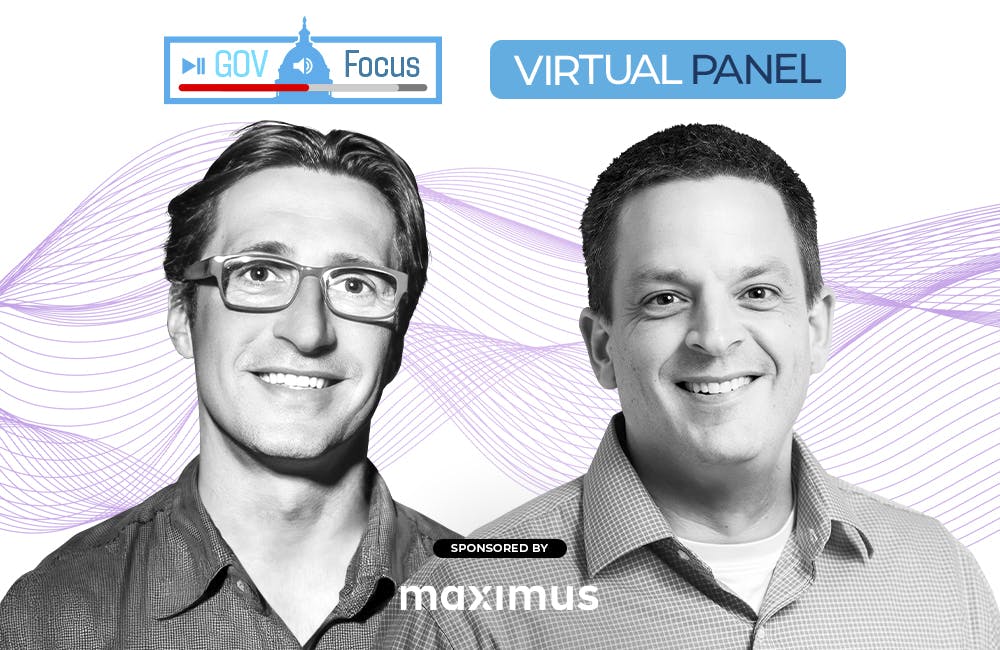DOD Adapting Cloud Strategy to Meet Pace of Technical Change
The Pentagon’s cloud office lead discusses the shift away from the JEDI cloud contract and what this means for its data modernization goals.

The Defense Department is updating its cloud-computing strategy and IT acquisitions to better meet the pace of technological change.
The agency’s recent cancellation of its heavily disputed JEDI cloud contract has highlighted what the path forward will be DOD’s next phase of cloud modernization. The agency is moving toward a more flexible contracting model that will more feasibly enable technology modernization. This also encompasses a more open approach to acquisitions that will create a more competitive field for firms that might offer the best solutions from an evolving marketplace.
In remarks to GovernmentCIO Media & Research, Sharon Woods, executive director of DOD’s Cloud Computing Program Office, discussed the ultimate goals of the Pentagon’s cloud modernization program and its shifting approach to technology acquisitions.
The DOD’s cloud migration program is a comparatively recent endeavor, one that began four years prior as part of a broader push to facilitate new tech adoption across the U.S. Armed Forces as a whole.
“The conversation around large-scale cloud migration changed in 2017 when the Department announced the effort to accelerate cloud adoption. The initiative to accelerate cloud adoption was a recognition that cloud was not just for business systems, but also warfighting requirements,” Woods said.
This cloud migration was initiated with specific organizational goals in mind, particularly as the backbone for supporting more data and computationally intensive programs across DOD.
“The move to a commercial cloud solution is a pillar of the Department’s drive to digital and software modernization. It’s not so much about the cloud, but what the cloud enables you to do. Enterprise commercial cloud is a springboard for critical initiatives like [Joint All-Domain Command, Control Framework (JADC2)] and [Artificial Intelligence and Data Acceleration (ADA)],” Woods said.
However, the foundational importance of cloud-based storage models in supporting cutting edge capacities across DOD has led to the Pentagon reevaluating its approach since planning began in earnest four years prior. This has encompassed a reevaluation of cloud contracting and associated technology acquisitions in the wake of moving away from the single-award JEDI contract.
“Over the last few years, the cloud computing industry has undergone significant technical advancements and marketplace changes that make it feasible for the Department to enter into a multi-vendor contract. These advances have resulted in expanded marketplace maturity, particularly with regard to multi-cloud and distributed-cloud deployment strategies. In addition, the DOD’s experience with utilizing cloud services and the lessons learned from the multi-cloud projects underway has increased the Department’s cloud conservancy,” Woods said.
This approach is embodied within the newly announced Joint Warfighting Cloud Capability (JWCC), a multi-vendor contract designed to open the competitive space rather than attach the DOD to one fixed provider.
“The Joint Warfighting Cloud Capability (JWCC) initiative is important in keeping pace with rapid technological change. The contract terms will ensure that DOD is continually receiving the best tech solutions that the commercial cloud marketplace has to offer — at all three classification levels with tactical edge capabilities,” Woods said.
The ultimate goal of this shift has been to maintain America’s strategic edge while more quickly and effectively putting new technology into the hands of the warfighter.
“Cloud infrastructure and platform services provide the foundation that allows mission owners to process information and make decisions faster than our adversaries can. Efforts like DevSecOps let us more quickly develop applications and capitalize on our data. Other efforts like [ADA] enable us to implement data standards and achieve a level of data analysis that is only possible with cloud algorithms. The multi-classification and tactical edge capabilities that JWCC will deliver further extend and scale all of these initiatives to where the military operates,” Woods said.
This is a carousel with manually rotating slides. Use Next and Previous buttons to navigate or jump to a slide with the slide dots
-

Marine Corps Operation StormBreaker Slashes Software Delivery Timelines by 17x
New program aims to deliver critical digital capabilities to warfighters at the "speed of relevance" by overhauling traditional processes.
4m read -

Modernization Strategies to Enable Energy Innovation
Lawrence Berkeley National Lab and Maximus experts explore the modernization strategies driving digital transformation and operational resilience within the energy sector.
33m watch -

DOE National Labs Launch New AI Tools for Operational Efficiency
The Energy Department's National Laboratories are using AI to increase operational efficiency and drive research efforts forward.
3m read -

Software Factories Accelerate Federal Modernization Outcomes
IT leaders from Nutanix and SAIC explain how software factories streamline tech development, modernize legacy systems and accelerate adoption of emerging technologies like AI.
34m watch -

AI in Top-Secret Clouds Is a ‘Game Changer’ for IC, DNI Says
Tulsi Gabbard touts significant improvements in AI, data analysis, interoperability and operational intelligence at the AWS Summit 2025.
3m read -

AWS Summit: Forging Successful Cloud Modernization Partnerships
Industry leaders share insights on the critical role industry partnerships have in enabling government agencies to navigate procurement challenges for cloud and zero trust solutions.
24m watch Partner Content -

Air Force, Coast Guard Talk Data Security Efforts for AI Development
The services' AI initiatives include efforts like creating clean training data, countering data poisoning and bridging siloed teams.
4m read -

Federal Agencies Tout Tech in President Trump’s First 100 Days
Defense modernization and health care restructuring landed among some of the key IT highlights within the president's first few months.
6m read -

Disruptive Technologies Charge Next Wave of Federal IT Modernization
Legacy system modernization requires the right tools for seamless migration.
8m watch Partner Content -

Retired Air Force Intelligence CIO: ‘Software Is Everything' to Modern Infrastructure
Modernizing defense infrastructure means breaking away from aging legacy systems toward scalable platforms.
5m watch -

How Federal Agencies Can Overcome Barriers to Tech Adoption
AI is reshaping the federal landscape, offering agencies a way to boost operational and cost efficiency and augment the workforce. However, speedy adoption remains a challenge.
8m watch Partner Content -

Modernizing Maritime Medicine on USNS Mercy
Navy's Military Sealift Command is leveraging telepresence technology and extending wireless networks to transform the way medical care is delivered.
8m watch
















